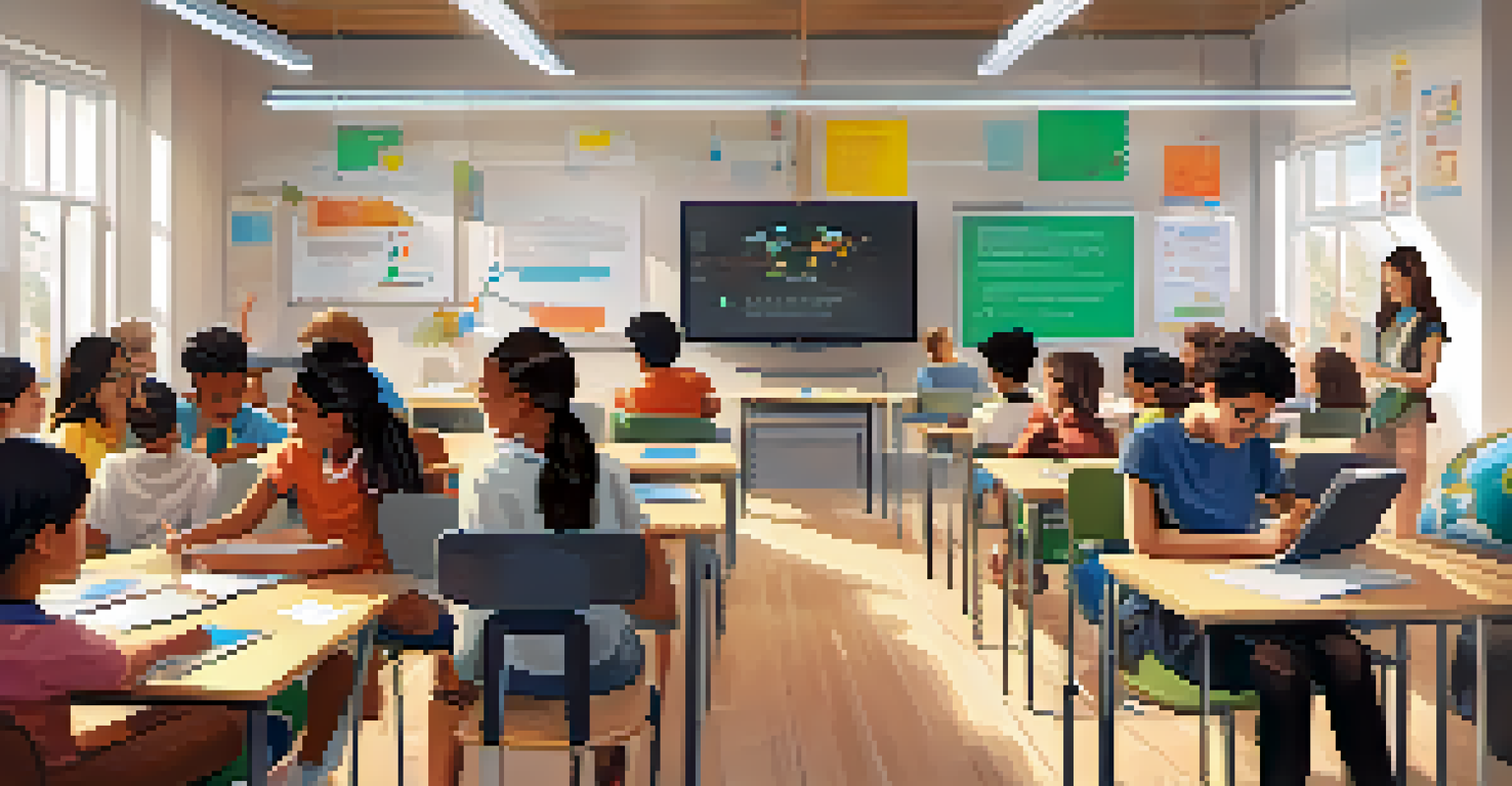Creating Compelling Learning Experiences with Microlearning

Understanding Microlearning and Its Benefits
Microlearning is an educational approach that delivers content in small, bite-sized modules. This method allows learners to absorb information quickly and effectively. Unlike traditional learning, which can be lengthy and overwhelming, microlearning focuses on specific topics, making it easier to digest and retain knowledge.
The best way to predict the future is to create it.
One significant benefit of microlearning is its flexibility. Learners can access materials anytime and anywhere, fitting learning into their busy schedules. This accessibility encourages continuous learning and helps individuals stay engaged with the content, rather than feeling boxed in by rigid classroom settings.
Moreover, microlearning promotes active engagement, as it often utilizes interactive elements like quizzes and simulations. This type of involvement not only makes the learning experience more enjoyable but also enhances retention, as learners are more likely to remember information they’ve actively interacted with.
Designing Effective Microlearning Experiences
To create compelling microlearning experiences, it's essential to focus on clarity and relevance. Start by identifying the specific learning objectives and ensuring that each module addresses these directly. This targeted approach helps learners understand the purpose of each lesson, leading to a more meaningful experience.

Incorporating multimedia elements can also enhance the effectiveness of microlearning. For instance, short videos, infographics, or interactive quizzes can cater to various learning styles, making the content more engaging. By mixing different formats, you keep learners interested and provide multiple avenues for understanding the material.
Microlearning Enhances Engagement
Microlearning's interactive elements promote active participation, making learning enjoyable and improving information retention.
Finally, consider the pacing of your microlearning modules. Each segment should be concise, ideally lasting no more than a few minutes. This brevity encourages learners to consume the content in manageable chunks, reinforcing the idea that learning can be a quick, enjoyable process rather than a daunting task.
Leveraging Technology in Microlearning
Technology plays a crucial role in the success of microlearning initiatives. Various platforms and tools are available that facilitate the creation and distribution of microlearning content. From learning management systems to mobile apps, these technologies make it easier for educators to reach their audience effectively.
Learning never exhausts the mind.
Mobile compatibility is particularly important, as many learners prefer accessing content on their smartphones or tablets. By ensuring that microlearning modules are mobile-friendly, you increase the likelihood that learners will engage with the material while on the go, whether they are commuting or taking a break.
Additionally, data analytics can provide valuable insights into learner behavior and performance. By tracking how learners interact with the microlearning content, educators can identify areas for improvement and tailor future modules to better meet learner needs, creating a continuous cycle of enhancement.
Creating a Culture of Continuous Learning
Microlearning can foster a culture of continuous learning within organizations. By providing ongoing training and development opportunities through bite-sized modules, employees are encouraged to pursue knowledge regularly. This approach not only boosts individual skills but also contributes to overall workplace productivity.
Moreover, when organizations prioritize microlearning, they demonstrate a commitment to employee growth. This investment in development can lead to increased job satisfaction, as employees feel valued and supported in their professional journey. A culture of learning also encourages collaboration and knowledge sharing among colleagues.
Technology Fuels Microlearning Growth
Leveraging mobile-friendly platforms and data analytics enhances the reach and effectiveness of microlearning initiatives.
By recognizing and rewarding continuous learning efforts, organizations can further motivate employees to engage with microlearning. Celebrating achievements, no matter how small, reinforces the importance of lifelong learning and keeps learners motivated to explore new topics and skills.
Ensuring Accessibility in Microlearning Content
Accessibility is a critical consideration when developing microlearning content. Ensuring that all learners, regardless of ability, can engage with the material is essential for inclusivity. This means considering factors such as visual and auditory elements, as well as providing alternative formats when necessary.
By using clear language and straightforward navigation, you can make microlearning modules more approachable for everyone. Avoiding jargon and complex terminology helps break down barriers, allowing learners to focus on the content rather than figuring out how to access it. It’s vital to create an environment where all learners feel comfortable and empowered.
Furthermore, incorporating feedback mechanisms can help identify accessibility issues. Encouraging learners to share their experiences and challenges allows you to refine the content continually. This commitment to improvement demonstrates a genuine dedication to meeting the diverse needs of your audience.
Evaluating the Success of Microlearning Initiatives
Evaluating the effectiveness of microlearning initiatives is essential to understanding their impact. By setting clear metrics and goals, organizations can assess whether the learning objectives are being met. Common evaluation methods include surveys, quizzes, and performance assessments.
Feedback from learners is invaluable in this process. Gathering insights on their experiences with the microlearning content can reveal what works well and what needs improvement. This feedback loop not only enhances the current modules but also informs the development of future content.
Continuous Learning Culture Boosts Skills
Organizations that embrace microlearning foster a culture of ongoing development, leading to increased employee satisfaction and productivity.
Additionally, tracking engagement metrics, such as completion rates and time spent on modules, can provide a quantitative measure of success. By analyzing this data, organizations can make informed decisions about their microlearning strategies and continuously refine their approach to create even more compelling learning experiences.
The Future of Microlearning in Education and Training
As technology continues to evolve, the future of microlearning looks bright. With the rise of virtual reality, artificial intelligence, and gamification, there are endless possibilities to enhance microlearning experiences. These innovations will likely lead to even more personalized and interactive learning opportunities.
The demand for flexible learning solutions is also expected to grow. As workplaces evolve and learners seek more control over their education, microlearning will become an increasingly popular choice. Organizations that embrace this trend will not only attract talent but also foster a culture of adaptability and growth.

Ultimately, the future of microlearning lies in its ability to meet the diverse needs of learners. By focusing on engagement, accessibility, and continuous improvement, educational institutions and organizations can create compelling learning experiences that prepare individuals for the challenges of tomorrow.